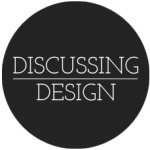Why is it that we created a whole blog dedicated to the topic of critique?
People ask us this all the time. I’m not kidding when I say that at least 2 people audibly laughed at me when I told them the idea. On the surface critique seems like a pretty straight forward thing.
But what we’ve come to believe through our own experiences and observations watching other teams work is that critique is an underpinning component in almost all of what we do as designers. Whether it’s actually being identified as critique because someone said “Hey. Let’s critique this design.” or not, the principles and framework of critique should be in place in almost every discussion a team has about a design or solution.
And this is why critique is central to good collaboration.
Collaborating means that a group of individuals are working TOGETHER toward a common goal. In that process, it’s fairly safe to say that even though one individual may have final say-so, the individual team members will be working together to make decisions by forming consensus around the best or most appropriate option.
How does a team do that? Sure, we have tools like usability studies, split and multi-variate testing, cognitive walkthroughs and yada yada yada. But if we had to use those tools every time there’s a question with multiple design options, we’d never get anywhere. Similarly, even if a team is only considering one option at the time, it would be short-sighted to put that design through a study without first analyzing it themselves. And so meetings are held, conversations take place, all with the goal of deciding which options to choose.
This is where critique comes in. By thinking critically about a design with regard to it’s goals, vision and uses, a team can better discuss and collaboratively evaluate options, building consensus faster around ideas that are more likely to achieve the desired results.
Critique doesn’t have to be something you explicitly call out time for in your process, though doing so can be very useful. The ultimate goal is for critique to become part of our natural, conversational language within our teams. Everyone within a team should be doing it. In our observations of teams working, it’s when team members can’t, or in some cases refuse, to do this that collaboration falls apart.
It seems pretty obvious to say that how we communicate with each other is a direct indicator of our ability to work and make things together. Yet teams struggle with is and sometimes ignore it hoping the “the process” will move them through everything safely.
What kinds of challenges have you faced in your team’s own discussions? Where have you been frustrated with the tone and direction of conversations? And what kinds of ways have you found to be helpful in bringing them back to critique and critical thinking?
Aaron and I will be facilitating a workshop on critique at this year’s IASummit. And one on Critique and Design Studio at the Healthcare Experience Design Conference. We’d love to hear about your challenges, questions and ideas.
Please feel free to add them to the comments here, or our thread on the IASummit Google Group.

No comments yet.